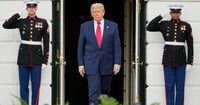In a move that has sparked fierce debate in Washington and beyond, six Democratic lawmakers with military or national security backgrounds released a video in November 2025 urging U.S. service members and intelligence personnel to refuse unlawful orders. The group included Senator Elissa Slotkin, Senator Mark Kelly, Representative Jason Crow, Representative Chris Deluzio, Representative Maggie Goodlander, and Representative Chrissy Houlahan, all of whom emphasized that the oath sworn by military and intelligence personnel is to the Constitution, not to any individual leader. Their message, while grounded in existing military law, has drawn both praise and condemnation, and has raised important questions about the balance between constitutional loyalty, military discipline, and political rhetoric.
In the video, the lawmakers warned that threats to constitutional order can arise "from within" and reminded troops that they "can and must refuse illegal orders." According to Military.com, this statement is technically correct under the Uniform Code of Military Justice (UCMJ), which requires service members to follow lawful orders and prohibits them from obeying orders that are clearly illegal. However, the legal terrain is anything but simple. As experts and military advocates point out, the legality of an order is not always immediately clear in the heat of real-world operations, which is precisely why Judge Advocate General (JAG) officers exist at every command level—to provide legal clarity and guidance. Expecting individual service members to make on-the-spot legal judgments without such support can put them at enormous personal risk.
The lawmakers, all with backgrounds in national security or military service, framed their message as a nonpartisan reminder of constitutional duty. "The oath is to the Constitution, not to any leader," the video declared, underscoring a principle that is foundational to American civil-military relations. Yet, the timing and delivery of their message proved anything but neutral.
President Donald Trump responded almost instantly and with characteristic force. On November 20, 2025, he called for the arrest of the lawmakers, labeling their actions "SEDITIOUS BEHAVIOR AT THE HIGHEST LEVEL" in an online post, as reported by The Washington Post. He did not stop there; Trump amplified posts on his social media platform that echoed his call for the lawmakers' arrest and accused them of being "traitors" whose behavior was "seditious" and "punishable by death." The president's reaction, coming amid ongoing disputes over executive authority and domestic deployments, has only intensified the political firestorm.
The lawmakers, for their part, have stood by their message. Several responded publicly, insisting that they would not be intimidated. They maintained that their video simply restated long-standing legal principles and was not intended as a political attack. Yet, critics from across the political spectrum were quick to point out the potential pitfalls of their approach.
Nonpartisan military observers and advocates raised concerns that the video’s messaging was vague and potentially destabilizing. The lawmakers did not identify any specific order they believed might be unlawful, nor did they offer concrete examples to help troops distinguish between a lawful and an unlawful order. Without such context, the phrase "refuse illegal orders" can blur the line between legitimate legal instruction and political signaling. In a system that relies on discipline, clarity, and stability, ambiguity is a real problem.
According to Military.com, the legal standard for refusing an order is narrow and well-defined: unlawful orders are those that involve clear violations of U.S. or international law, such as intentionally targeting civilians or committing acts explicitly prohibited by statute. Orders that are controversial, politically fraught, or later judged unwise do not meet this threshold. The UCMJ makes it clear that refusing a lawful order is itself a punishable offense, and the chain of command is designed to provide guidance and clarity, not to leave junior troops guessing about the legality of their instructions.
The civil-military implications of the video are significant. Civilian control of the military in the United States rests on a clear hierarchy: Congress passes laws, the executive directs operations, and the military follows lawful commands. When lawmakers address troops directly about which orders to follow, they risk bypassing the established chain of command and sowing confusion. As Military.com noted, military leaders—not legislators—are responsible for issuing guidance to troops on how to evaluate or report questionable orders. When such messaging comes from elected officials rather than military authorities, it can inadvertently invite service members into political disputes, especially during periods of heightened political tension.
The timing of the video only amplified its impact. Released during a period marked by heated debates over executive authority and the role of the military in domestic affairs, some analysts interpreted the video as a preemptive signal of resistance to possible presidential actions. Others saw it as a clumsy but well-intentioned effort to reassure service members that constitutional norms still matter, even at a volatile political moment. Regardless of the lawmakers’ motives, their presentation left ample room for misinterpretation and allowed critics—including President Trump—to frame it as an attempt to politicize the military.
Supporters of the lawmakers’ message argue that the obligation to reject manifestly unlawful orders is a vital safeguard for democracy, especially in times of political uncertainty. They contend that reminding troops of their constitutional duties is never out of place, particularly when fears of democratic backsliding are in the air. However, even sympathetic observers acknowledge that the delivery of the message matters. Without concrete examples, legal context, or acknowledgment of the established processes—such as the role of commanders and JAG officers—the video oversimplifies a complex and high-stakes issue. As Military.com put it, “the legal principle they cited is real, but as former servicemembers they should know better. The method they chose was not the right place to deliver it.”
The backlash from the Trump camp has been equally fraught. Critics of the former president accused him of weaponizing charged rhetoric against his political opponents and of attempting to intimidate lawmakers exercising their free speech rights. Supporters, on the other hand, argued that encouraging troops to question orders—even under the banner of legality—invites disorder and undermines the discipline essential to military effectiveness. The president’s call for arrest and his invocation of terms like "seditious" and "traitors" have further polarized an already divided political landscape.
For many observers, the controversy underscores the delicate balance at the heart of American democracy: the need to uphold constitutional principles while preserving the discipline and nonpartisanship of the armed forces. The lawmakers’ video, whatever its intentions, has brought these tensions to the fore, reminding the nation that even well-meaning efforts to defend democracy can have unintended consequences—especially when the stakes are this high.
As the dust settles, one thing is clear: the intersection of law, politics, and military duty remains as fraught and consequential as ever. The debate over where to draw the line between constitutional fidelity and political signaling is far from over, and the answers will shape the future of civil-military relations in the United States for years to come.




